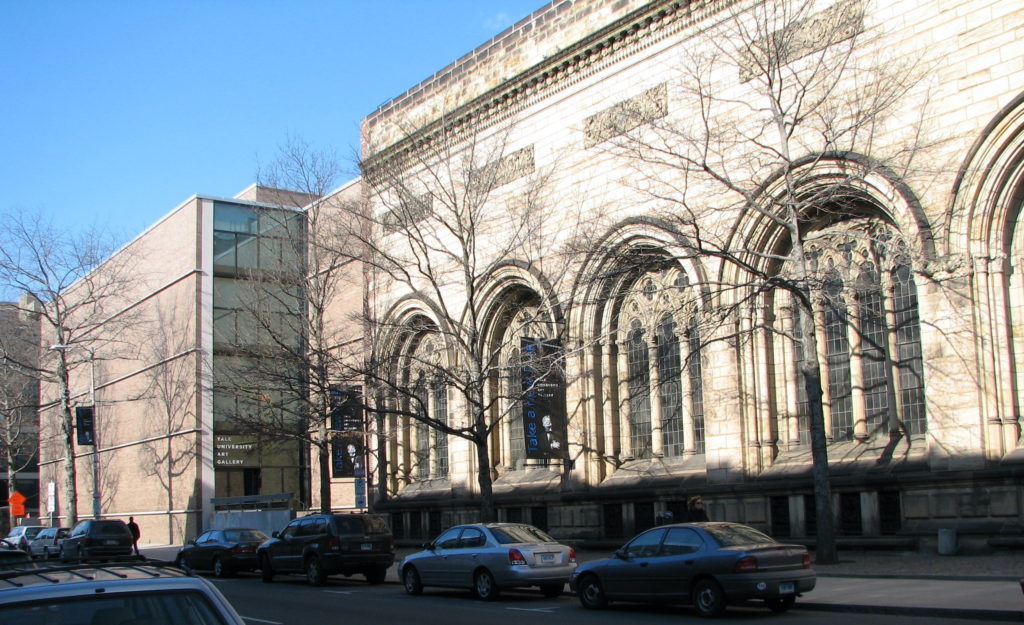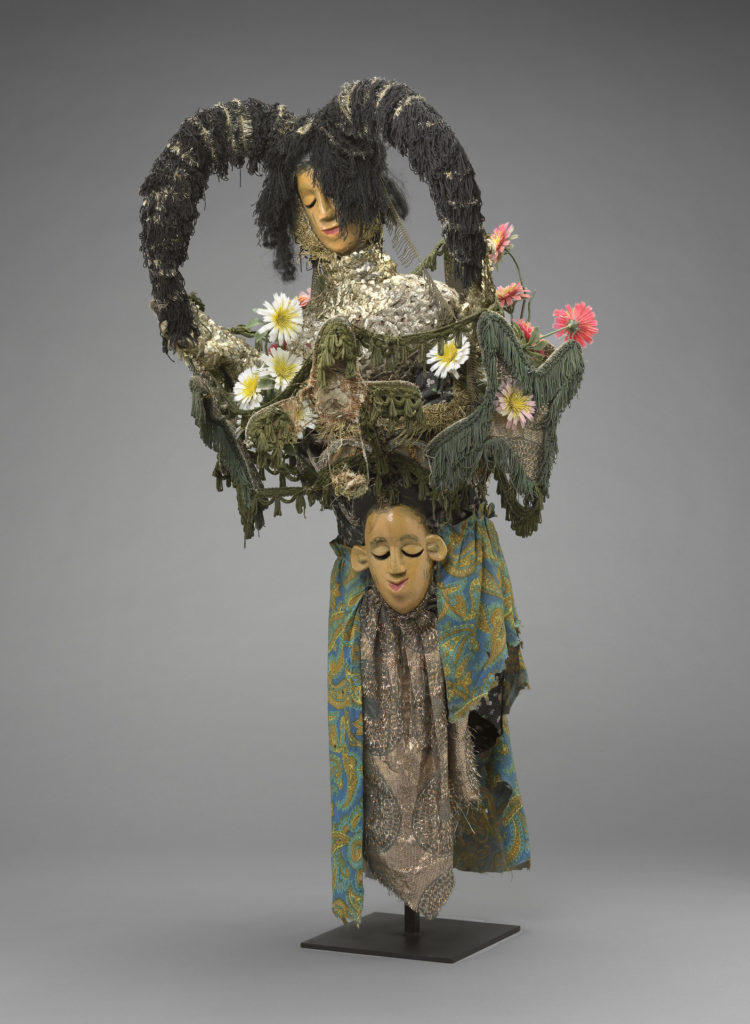By Alexandra M. Thomas
This piece is the second in our series on pedagogy, focused on themes of inclusivity and equity. The introduction to the series can be read here and other pieces in the series will be linked in the introduction as we publish them.

One of my greatest mentors, the Black Muslim feminist and queer of color theorist Aliyyah Abdur-Rahman, once referred to the promise of coalitional politics and communal sociality as being akin to Toni Morrison’s description of Baby Suggs preaching outdoors in Toni Morrison’s Beloved and Black lesbian teacher Ms. Rain’s multicultural classroom in Push by Sapphire. I hope for an anarchist learning experience, in which the passions and thought-experiments of my students overpower the presumed hierarchies of ‘teacher’ and ‘student’ as subject-positions. When possible, I guide my students toward this collaborative, anti-hierarchical vision.
I am rebellious in, with, and against the museum world. Sometimes this manifests when I stand too close to the art, and other times it is evident when I am taking a larger group of children into the museum than I should. I tell children that their lives are worth more than the art. I belittle the rules of the museum: “we have to do this but it sucks, right?” I have a political objective aligned with principles of Black feminist thought, which is to say I encourage my students to use visual and expressive culture as a mode through which to envision a new world free from racism, sexism, queerphobia, and all other antagonistic systems. The students I teach in the museum are not expected to consider Monet’s lilies or ancient Greek sculpture beautiful. If all we discuss while looking at a Jackson Pollock drip painting is what shapes, colors, and feelings we see, I am more than satisfied.
We are not yet free. And the museum is not yet ours — but I encourage my students to treat it as such. We treat objects with histories of colonial looting as cultural heritage that will be repatriated, as what will need to happen, whether or not the powers-that-be have plans to do so or not. This insistence upon that which will have had to happen, what scholar Tina Campt describes as the future real conditional tense in Listening to Images, resists the neoliberal pressure to remain caught in open dialogue at endless town halls as opposed to material actions that need to take place. This inevitably raises questions about a nearly mainstream question in the arts today: can we decolonize the museum? While decolonization, like other radical terms, has been co-opted by liberal talking points focused on inclusion into elitist institutions, the question of decolonizing the museum does important political work in framing museums as settler-colonial and imperial institutions. As such, I approach the question with skepticism and hope. The museum cannot be decolonized as long as it is embedded within the capital flows and infrastructure of a settler colonial society. Therefore, a decolonial vision and politics can be elaborated through challenging museums, but it requires extensive material restructuring of the institution and its society.
I share my story without self-congratulatory pretensions, but instead, as an invitation for other scholar-educator-activists to join me in this movement toward a visual arts pedagogy that is not predicated on Western hegemonic standards of beauty and Eurocentric masculinist epistemological frameworks. One illustrious example was when I was interviewed by Amelia Hruby for her Fifty Feminist States podcast, and I called for “feminist groups to eat cupcakes and go be loud in museums.” That jocular one-liner actually taps into a well of pedagogical method: how can teaching, learning, and visual analysis be about radical politics and pleasure?
Most importantly, I teach with youthful rebellion in mind, especially that of Black, Indigenous, and migrant youth. Enter Ode-Lay Masquerade — the fabulous masks from Freetown, Sierra Leone — that have been among my favorite objects to teach from at the Yale University Art Gallery. While I do not presume mastery over any objects in the museum, my research and pedagogy with Ode-Lay Masquerade poses an innovative model for combining histories of African and African diasporic art with social justice. My tours always begin as such:
I tell New Haven public school students, predominantly Black and Latinx, that the Yale University Art Gallery belongs to them. This is their home; this is their museum.

Students are always surprised to see such an object in an African arts department and are further entranced by the history and politics of the masquerade itself. The particular methods of museum education are beyond the scope of this reflection on my pedagogical philosophies, but it is worth noting that I open my collaborative learning experiences with Ode-Lay masks by encouraging students to be guided by curiosity. They tell me what stands out to them, and often they find the masks to be gorgeous yet confusing. Many are already familiar with carnival in the Caribbean context, and possibly with Yoruba masquerade in Nigeria. A significant number of these students already have the concept of sacred dance within their worldview. Important here is reflecting on why I choose to teach about Ode-Lay masks. It is because Ode-Lay masquerade succeeds at being festive and anarchist: it is explicitly spiritual, political, and imaginative. Ode-Lay associations are groups of mostly young, working-class men, some of whom have migrated from rural parts of Sierra Leone to Freetown. Ode-Lay masquerade is a distinctly urban masquerade that gained prominence in the mid 20thcentury. Freetown is a diverse and vibrant city that includes the history of Igbo, Yoruba, African-American, South and East Asian, and other cultural influences, all of which are represented in and through Ode-Lay masquerade. Freetown masqueraders create extravagant masks that represent their interests. Reggae music, Caribbean carnival, Chinese cinema, Bollywood film, Christianity, and Islam inform the masquerade and the festivals in which they participate. I often teach Fig. 1 through the lens of what Tao Leigh Goffe calls “Afro-Asian Intimacies.” On one hand, there has been a South Asian diaspora in Sierra Leone since the nineteenth century when Indian laborers came to the country to construct the railroad. One can interpret the juxtaposition with an enslaved black man and a South Asian woman as referencing the solidarity and intimacy between enslaved and formerly enslaved black laborers with Asian laborers. Other interpretations recognize the shackles on the man’s hands as symbolic of the oppressive dimension of racial tensions and loss of employment among free black laborers when underpaid Asian laborers were brought to British colonies, including Sierra Leone. The differential racialization of the two figures represented reveals the ways in which the Ode-Lay masquerades conceptualized the diversity among their communities. Indeed, this work displays an encounter between histories — South Asian migration and the trans-Atlantic slave trade — that are often considered to be separate despite the tangible ways in which they intersect.
While Ode-Lay masquerade coincides with national celebrations and is a pleasurable event for its community, it is also deeply political. The Sierra Leonean government has relied on Ode-Lay associations for political campaigning while simultaneously attempting to police their celebrations and parades; this is a problem that has persisted throughout and after British colonial control. While Ode-Lay associations function as social and economic organizations for marginalized and disenfranchised people to come together, they also serve key political functions. Often, politicians and political parties rely on the Ode-Lay associations for patronage even while the government tries to control the Ode-Lay masquerades from becoming “too rowdy.” Scholar John Nunley details one such event in which a Freetown newspaper reported that on November 22rd, the feast of Eid-Ul-Adha, police clashed with masqueraders who chose to dance and celebrate in the streets despite a ban on parades.[2] Ode-Lay associations also have an anarchist function, as their performances are often in direct rebellion of government orders.

Learning about Ode-Lay masquerade becomes a lens through which to learn about political resistance, the power of aesthetics, and the limits and possibilities of coalitions. There is often an assumption that in order for art to be part of consciousness-raising, it must be social realism with an explicitly didactic function. Learning about the fierce and fancy aesthetics of Ode-Lay masks, evident in works like Fig. 2, becomes a way in which radiance and beauty can be tethered to rebellion — youthful rebellion in particular. I teach young students in New Haven, CT that there are young working-class people in Freetown who dance in the streets on all major religious and state holidays, and wield political power. This is all to say: African art can be used in museum education to instill an oppositional consciousness in young folks who attend museums. The aim of Western education, and all settler colonial institutions, is to divide, conquer, and surveil. Working as what I like to call museum rebels, both within and against these institutions, becomes an opportunity for learning about cultural heritage and exploring how we can work together, across coalitions, to disrupt the status-quo just as the Freetown masqueraders do.
[1] Tina M. Campt, Listening to Images (Duke University Press, 2017).
[2] John Nunley, “Purity and Pollution in Freetown: Masked Performance,” (TDR, 1988), 102.
Alexandra M. Thomas is a queer black feminist art critic, gallery teacher, and PhD student at Yale. She researches modern and contemporary arts of global Africa with an emphasis on transnational feminism, queer of color critique, and critical museum studies. You can follow her on Twitter @_aly_tho_ and Instagram @_aly_m_thomas.
